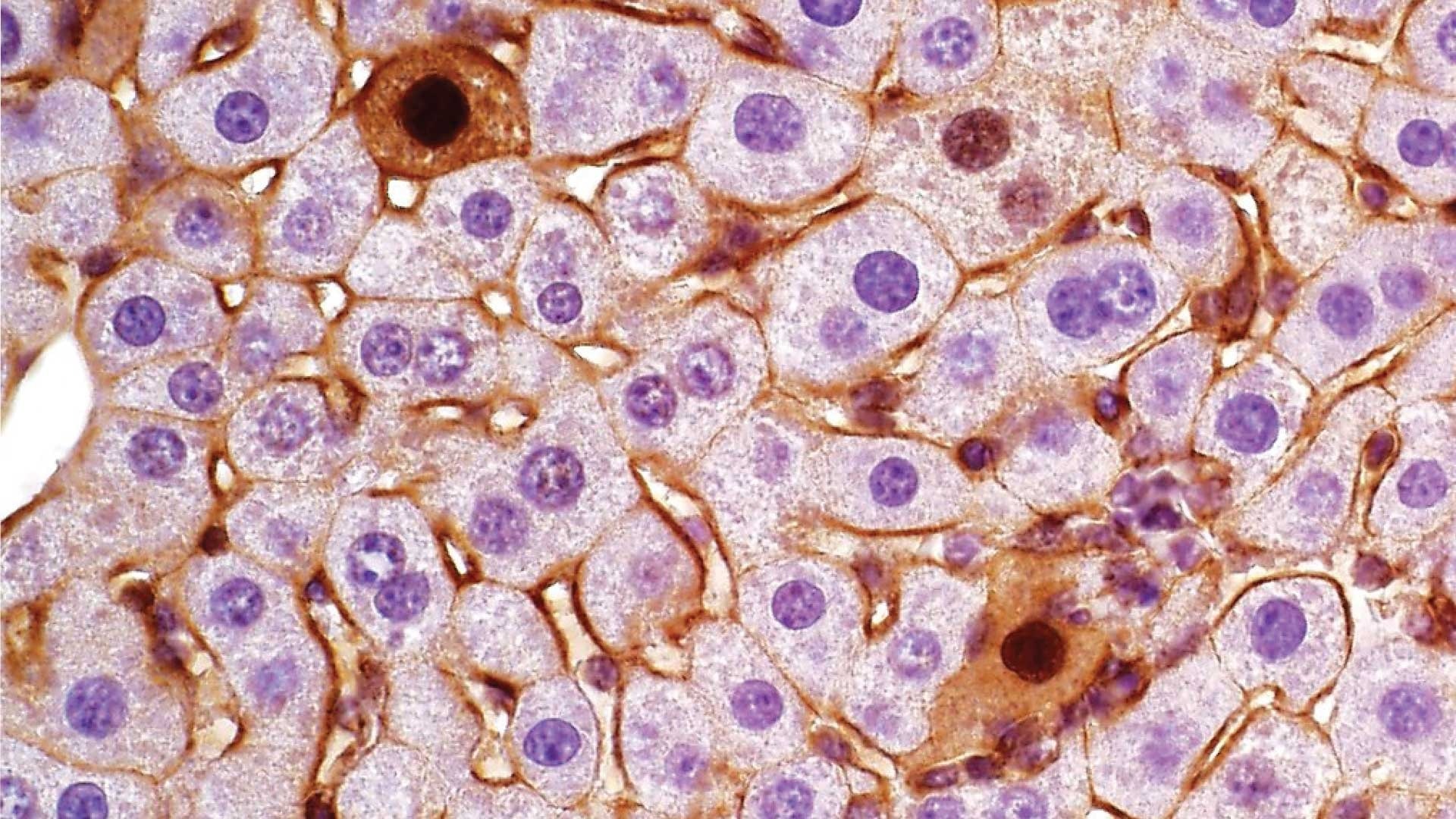Mutations in human genes can cause serious issues, such as colon or liver cancer. However, cancer is a very complex condition. Mutations in the same genes can result in distinct kinds of cancers in different persons. Scientists currently lack a viable method for producing such tumor subtypes for laboratory research.
 An up-close look at a mouse’s liver; the cells with dark centers were turned cancerous using a new gene-editing strategy devised by Semir Beyaz’s lab. Image Credit: Cold Spring Harbor Laboratory
An up-close look at a mouse’s liver; the cells with dark centers were turned cancerous using a new gene-editing strategy devised by Semir Beyaz’s lab. Image Credit: Cold Spring Harbor Laboratory
Now, Cold Spring Harbor Laboratory Assistant Professor Semir Beyaz has developed a new way of modeling specific liver cancer tumor subtypes using the gene-editing technology CRISPR-Cas9.
Genes carry information that human bodies require to make proteins. Isoforms are highly similar proteins expressed by the same gene. Tumors are produced by different isoforms. This is known as exon skipping, and it involves stitching together various portions of a gene to create a new version of a protein.
Everyone thinks that cancer is just one type. But with different isoforms, you can end up with cancer subtypes that have different characteristics.”
Semir Beyaz, Assistant Professor, Cold Spring Harbor Laboratory
Beyaz and his co-workers created two unique tumor subtypes by using CRISPR to target a single portion of the mouse gene, Ctnnb1. The tool is mostly used to suppress gene function. CRISPR was employed for the first time to create cancer-causing gain-of-function mutations in mice.
These mutations increase protein activity, hence promoting tumor growth. The researchers sequenced each tumor subtype to determine which isoform was responsible for the observed variations.
We were able to define those isoforms that associated with different cancer subtypes. That was, for us, a surprising discovery.”
Semir Beyaz, Assistant Professor, Cold Spring Harbor Laboratory
Researchers then created the variants in mice without utilizing CRISPR to confirm that these isoforms were indeed responsible for the variations. They discovered that they could generate the two separate tumor subtypes with their respective properties. Both of these liver tumor subtypes have been identified in people.
Beyaz’s targeted mutations have been linked to colon and liver malignancies. Exon skipping targeting has emerged as a promising therapeutic method for cancer and other disorders. Beyaz’s novel research method uses CRISPR to analyze this phenomenon in living mouse cells. The technology may one day assist researchers in developing new therapeutic interventions.
Ultimately, what we want to do is find the best models to study the biology of cancer so that we can find a cure.”
Semir Beyaz, Assistant Professor, Cold Spring Harbor Laboratory
Source:
Journal reference:
Mou, H., et al. (2023). CRISPR ‐induced exon skipping of β‐catenin reveals tumorigenic mutants driving distinct subtypes of liver cancer. The Journal of Pathology. doi.org/10.1002/path.6054.